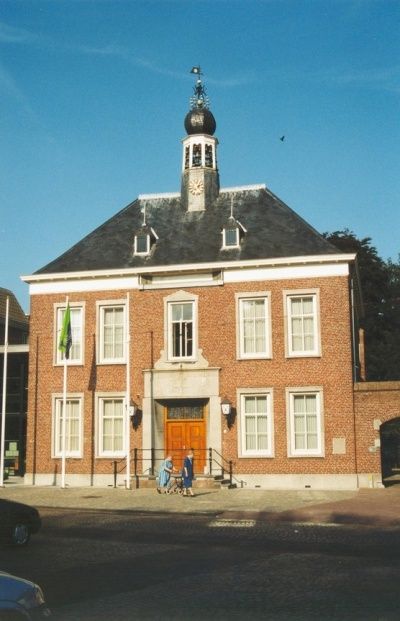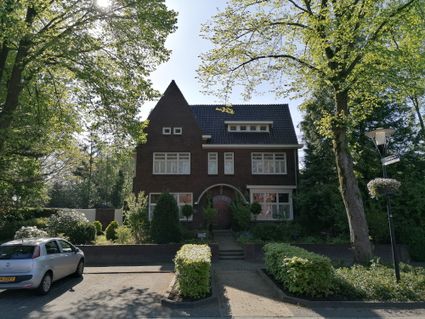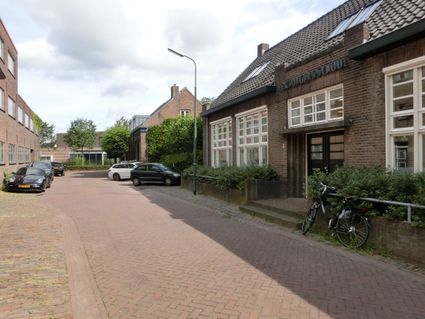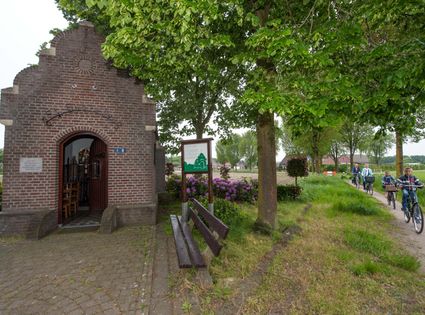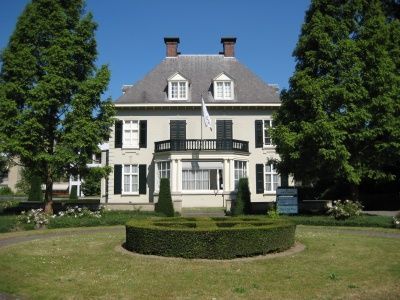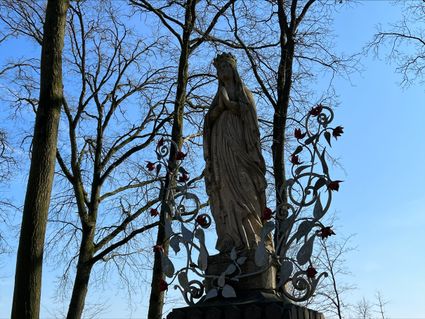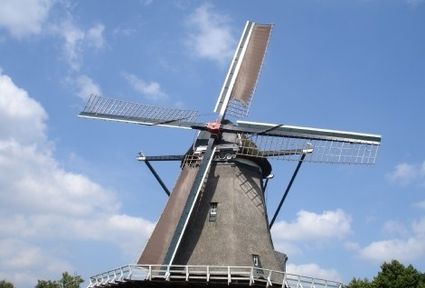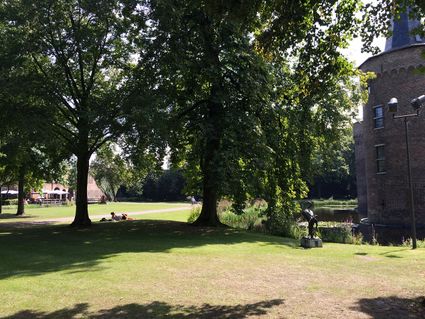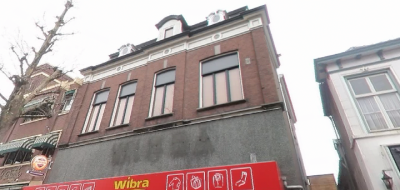Gemeentehuis Gemert- Bakel
This old villa is now used as a town hall. Beneath the shell of the old town hall (with bordestrap) is the spacious nineteenth-century neo-cla…
This old villa is now used as a town hall. Beneath the shell of the old town hall (with bordestrap) is the spacious nineteenth-century neo-classical villa that the municipality bought in 1926 from the heirs of Miss Josephina Verschure. This villa was built here in the years 1878-1879 by the very enterprising Willem van Schijndel, who shortly after 1870 was one of the first in North Brabant to apply himself to the manufacture of margarine (artificial butter). He had a factory powered by a steam engine at the front of Molenstraat. In a short time he earned so much from the margarine that he was able to finance this capital villa. His entrepreneurial spirit is also evidenced by the fact that at the World Exhibition in Paris in 1881 he bought the installation of the entirely machine-driven clog factory demonstrated there for the first time. He operated that factory in Beek en Donk. The well-known Brabant photographer Martien Coppens was a son of the manager of the machine-made clog factory. The entrepreneur Willem van Schijndel died relatively young (1893). His family then moved to Brussels.But the shading used in the drawings that were sent to the High Council of Nobility for that purpose would not have matched the designation that should have been before it. This municipal sloppiness was only corrected when Gemert and Bakel were merged on January 1, 1997, and a new municipal coat of arms had to be chosen (see above the new main entrance). The old German Knighthood coat of arms (but in the correct colors) was brought together there with the Willibrord colors red and white (according to the colors in the coat of arms of the Echternach monastery founded by Willibrord and those of the municipality of Utrecht where Willibrord established a bishop's seat). Willibrord received the Bakel church in 714, and the primal parish of Bakel also included Gemert and also, for example, Deurne. The old municipal coat of arms of Gemert can also be found on the wind vanes of the dormers and the roof of the town hall.
The villa of Willem van Schijndel was built on the site of the inn "In de ridder Sint Joris", known since 1549. Diagonally behind the building, where the main entrance to the town hall is now located, you went to the beer brewery belonging to the inn. Around 1600 there were already four 'brew houses' on Ridderplein (then officially called 'Plaetse' or 'Merckt'), but the inn named after Sint Joris was the most important one for centuries. Hotel De Keizer obtained its beer from St. Joris and it had its own hop field, where the neighborhood Hop Field now lies. The operator was known far and wide as "de Cock. The building next door was naturally named 'Klein Sint Joris'.
On a small format perspex frame on the table at the Gemert-Bakel VVV is a reproduction of a print by Valentijn Klotz from 1675 showing the situation 'aan de Merckt' from that year. On this image we only see the signboard of the inn St. Joris. Remarkable especially here at the Ridderplein is the fact that St. Joris may be considered the patron saint of knights. In 1675 we see the inn 'In de Wildeman' on the site of the current Rabobank. Not only the inns but also many other buildings in the past had a name like today's house number.
Back to the town hall. The current appearance dates from a renovation led by architect Jan Magis (Helmond) that began a few months before the German invasion (May 10, 1940). In 1941, that renovation was completed. Above in the northern side wall and also in the stone of the municipal coat of arms above the entrance, we can still see holes from bomb fragments from the fall of 1944 (which caused two large craters on the square). The coat of arms is the old municipal coat of arms of Gemert, in which elements of the German Knighthood coat of arms are recognizable. At the time (1817) it was indeed the intention of the city council to choose for the municipality of Gemert the coat of arms of the German Order of Knights, which had been abolished by Napoleon.
